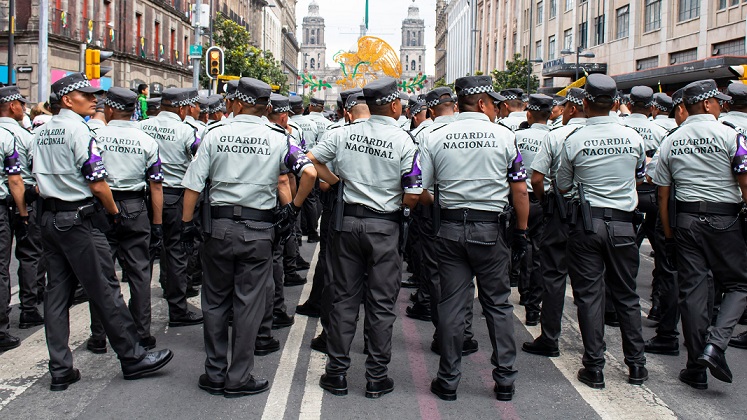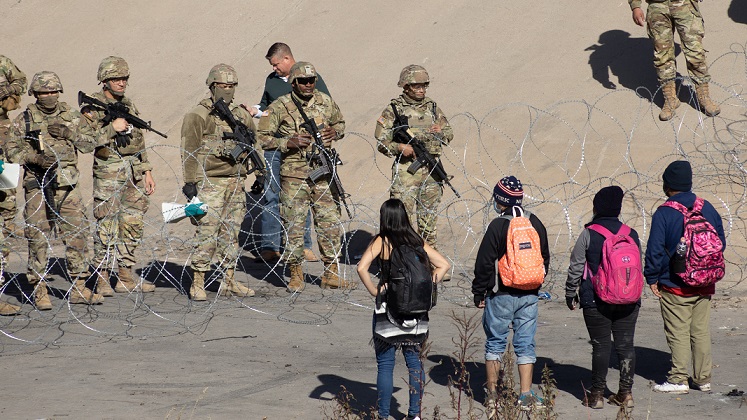The state of Guerrero in Mexico has a long history of social revindications and suffered from the effervescence of guerrillas in the 1990s and 2000s. The campaigns to eradicate illicit crops worked as a strategy to control “politically uncomfortable” people in a stigmatised region, as Irene Álvarez (Secretaría de Seguridad y Protección Ciudadana, Mexico) found.
Lee este artículo en español
Governments in Mexico have long recurred to the need to eradicate poppy fields as an argument to justify the militarisation of regions and conducting counterinsurgency operations. In our article In the Name of Poppy: Eradication and Counterinsurgency in Southern Mexico (Alvarez, Gaussens & Frissard, 2022) for the LSE’s Journal of Illicit Economies and Development, we provide evidence that military operations happen in municipalities where there is no significant opiate production, but instead, there is a presence of guerrilla movements.
These military operations are undertaken as part of campaigns to eradicate poppy plantations. Still, we argue that those actions are part of the process of the construction of statehood in territories that, for one reason or another, represent a threat. In other words, operations to eradicate illicit crops can be interpreted as governing “problematic” geographies and bodies, as Mariana Mora explained in 2017.
To address this issue, we developed a methodology that integrates statistical analysis, ethnographic fieldwork, and hemerographic research to verify that the presence of armed forces in some Mexican regions supposedly deployed to eliminate opiates is not convincing. The production of those substances is virtually non-existent.
Our research focuses on Guerrero, a state in southern Mexico with a long history of revindications of social demands, and where the guerrilla effervescence in the 1990s and 2000s stands out. One key protagonist in this story is the Popular Revolutionary Army (Ejército Popular Revolucionario, EPR). This guerrilla movement emerged on June 28, 1996, on the first anniversary of a police offensive that resulted in the murders of 17 farmers, an incident known today as the Aguas Blancas massacre. An important offshoot of the EPR was the Insurgent People’s Popular Revolutionary Army (Ejército Popular Revolucionario del Pueblo Insurgente, ERPI), which was formed in 1997.
Two municipalities with high poppy eradication rates
The first case we analyse is in Atoyac de Álvarez, a municipality that, by the late 1990s and early 2000s, sheltered guerrilla movements like the EPR. It is important to note that it was precisely in that period (1997-2002) when Mexico’s Department of National Defense (Secretaría de la Defensa Nacional, SEDENA) reported the destruction of 5,000 hectares of poppies, though this is a controversial figure because poppy cultivation is scarce due to the region’s climatic conditions and altitude.
We submitted requests for access to information to three government agencies –SEDENA, the National Prosecutor’s Office, and the Department of the Navy– through Mexico’s National Transparency System (Sistema Nacional de Transparencia). Their responses allowed us to compile annual data by municipality or state on the poppy plantations each agency declared as destroyed.
Local people in this area vividly recall a strong military presence, and according to their testimonies, those soldiers did not destroy plantations of illicit crops but harassed the general population.
The second case focuses on Ayutla de Los Libres, an indigenous municipality where SEDENA reported the eradication of almost 40,000 hectares of poppy fields between 2003 and 2006. By this time, guerrilla mobilisations were active not only in Guerrero but also in several other areas of Mexico, leading to the deployment of a robust military presence in a zone where poppy production was marginal. Between 1996 and 2013, guerrilla groups had a presence in at least 32 municipalities of Guerrero.
As in the case of Atoyac de Álvarez, ethnographic evidence shows that the actions of those soldiers were oriented more towards finding members of guerrillas than destroying poppy fields.
The data gathered led us to argue that those anti-narcotic operations were, in reality, counterinsurgency actions launched against peasant and indigenous populations in rural zones of southern Mexico. We believe that campaigns to eradicate illicit crops actually functioned as a strategy to control “politically uncomfortable” people.
For the people that lived in stigmatised regions of Guerrero like Atoyac de Álvarez and Ayutla de Los Libres, the arrests, inspections, and harassment suffered by the Mexican armed forces became everyday experiences that can only be explained by the fact that they lived in liminal territories. SEDENA’s incursions into those lands constituted elements of a geographic solution to the political crisis that guerrilla movements embodied. As a result, these anti-narcotic actions worked as a form of political repression in the face of threats of social mobilisation.
Notes:
• The views expressed here are of the author rather than the Centre or the LSE
• This post is based on the article In the Name of Poppy: Eradication and Counterinsurgency in Southern Mexico for the LSE’s Journal of Illicit Economies and Development.
• Please read our Comments Policy before commenting
• Banner image: A Mexican soldier carries poppies in an illegal field in Mexico / Octavio Hoyos (Shutterstock)





